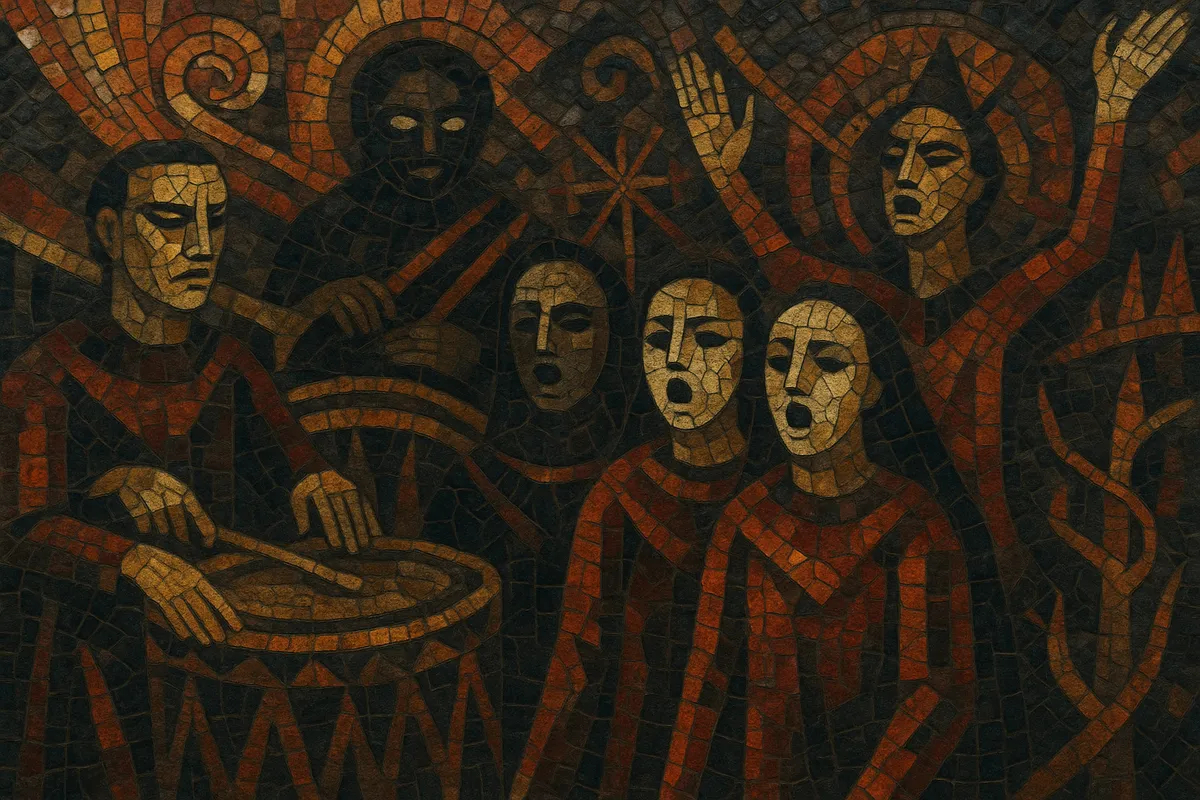Zeuhl is a French-born branch of progressive rock defined by martial, repetitive grooves, choral chanting, and a dramatic, ritualistic atmosphere. The term was coined by Christian Vander of Magma (from the band’s invented Kobaïan language, often glossed as “celestial”).
Musically, zeuhl blends the drive of jazz fusion, the architecture of 20th‑century modern classical and minimalism, and the intensity of avant-garde jazz with rock instrumentation. Expect ostinatos in odd meters, pounding bass and drums, tightly voiced choirs, and long, swelling crescendos that move from trance-like passages to explosive climaxes.
Vocals—frequently in invented or phonetic languages—function rhythmically and texturally as much as melodically, reinforcing the genre’s hypnotic, ceremonial feel.
Zeuhl emerged in France at the turn of the 1970s with Magma, formed by drummer-composer Christian Vander. Drawing on jazz fusion, free jazz, modern classical, and minimalism, Vander envisioned a through-composed, rhythm-driven rock music featuring choral vocals and an invented language (Kobaïan). Early Magma albums—particularly Mëkanïk Dëstruktïẁ Kömmandöh (1973)—codified the genre’s core traits: cycling ostinatos, insistent bass and drums, choral blocks, and tectonic dynamic arcs.
Magma’s alumni seeded a small but potent French scene. Weidorje (Jannick Top, Bernard Paganotti), Zao (Yochk’o Seffer, François Cahen), Eskaton, and Dün developed variations ranging from heavier, bass-forward thrusts to chamber-like intricacies. While remaining underground, these bands solidified “zeuhl” as a recognizable style distinct from other prog branches.
As progressive rock receded commercially in the 1980s, zeuhl activity slowed but did not vanish. The 1990s saw a resurgence, especially in Japan, where musicians absorbed zeuhl’s precision and intensity: Ruins and Kōenji Hyakkei (led by Tatsuya Yoshida) advanced a hyper-kinetic, angular take that reinvigorated the idiom. This era also fostered darker variants (e.g., Shub‑Niggurath) and new ensembles across Europe.
Magma continued releasing and performing, catalyzing new generations. Acts from Italy (Universal Totem Orchestra), the Americas (Corima), and elsewhere adapted zeuhl’s vocabulary—hybridizing it with avant-prog, RIO, experimental rock, and metal. Today, zeuhl remains a niche yet vital current within progressive and experimental music, celebrated at specialized festivals and by a dedicated global community.


